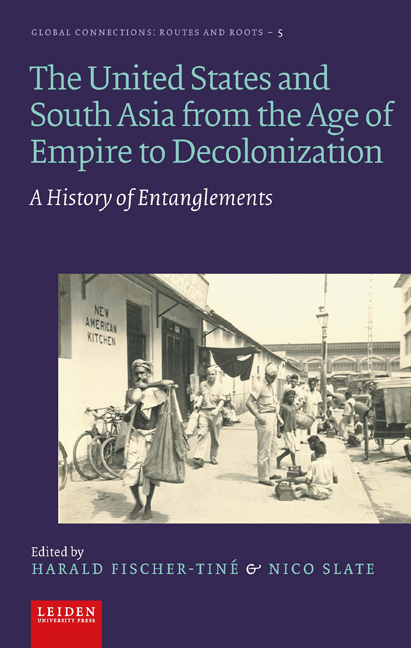 The United States and South Asia from the Age of Empire to Decolonization
The United States and South Asia from the Age of Empire to Decolonization Published online by Cambridge University Press: 07 January 2025
Abstract The year 1896 marked the beginning of a prolonged period of hunger in India, during which the Protestant missionaries of the American Marathi Mission (AMM) in Bombay moved to the forefront of US-sponsored famine relief activities in South Asia. In response to changes in North American society that had encouraged American involvement in international disaster relief, Christian donors seemingly threw themselves into efforts to assist Indians. The chapter considers American famine relief in India in the late 1890s as a pivotal moment in the shared history of South Asia and the United States, but does not attempt to reproduce the narrative of unilateral American expansion or burgeoning humanitarian sentiment. The chapter shows how famine relief aligned with the AMM's efforts to gain a foothold in colonial South Asia. It challenges the typical American-centered historiography on humanitarianism by looking at the AMM's famine relief in Bombay as a site of mutual, if unequal, encounters between Indians and Americans and elaborating on some of the complexities this created.
Keywords: American Missionaries, Colonial India, Bombay, famine, humanitarianism
The 1890s saw a dramatic rise in American international humanitarianism. Enabled by the material prosperity of the United States, Americans mitigated the effects of war and famine overseas to demonstrate the alleged moral, economic and religious power of the United States in the world. This included South Asia, where the year 1896 marked the beginning of a prolonged period of amplified hunger. Historians commonly divide this period into the famines of 1896–97 and 1899–1900. Although Americans had shown interest in alleviating social ills in British India before, the scope of the responses of mission societies, philanthropists and the religious press in North America to these famines was unprecedented. In this chapter, I examine US-sponsored famine relief in India in the late 1890s as a defining moment in the history of the encounter of India and the United States, and some of the multidirectional engagements of both societies that emerged against this background.
The missionaries of the American Board of Commissioners for Foreign Missions (ABCFM), who ran the American Marathi Mission (AMM) in Bombay since 1813, were amongst the most vocal advocates of greater US involvement in South Asia. Missionaries portrayed India as a land of evangelical opportunities and Indians as a people waiting to become Protestants.
To save this book to your Kindle, first ensure no-reply@cambridge.org is added to your Approved Personal Document E-mail List under your Personal Document Settings on the Manage Your Content and Devices page of your Amazon account. Then enter the ‘name’ part of your Kindle email address below. Find out more about saving to your Kindle.
Note you can select to save to either the @free.kindle.com or @kindle.com variations. ‘@free.kindle.com’ emails are free but can only be saved to your device when it is connected to wi-fi. ‘@kindle.com’ emails can be delivered even when you are not connected to wi-fi, but note that service fees apply.
Find out more about the Kindle Personal Document Service.
To save content items to your account, please confirm that you agree to abide by our usage policies. If this is the first time you use this feature, you will be asked to authorise Cambridge Core to connect with your account. Find out more about saving content to Dropbox.
To save content items to your account, please confirm that you agree to abide by our usage policies. If this is the first time you use this feature, you will be asked to authorise Cambridge Core to connect with your account. Find out more about saving content to Google Drive.